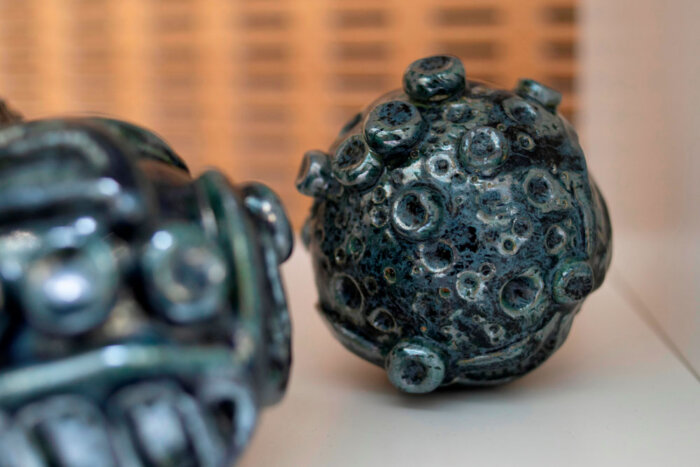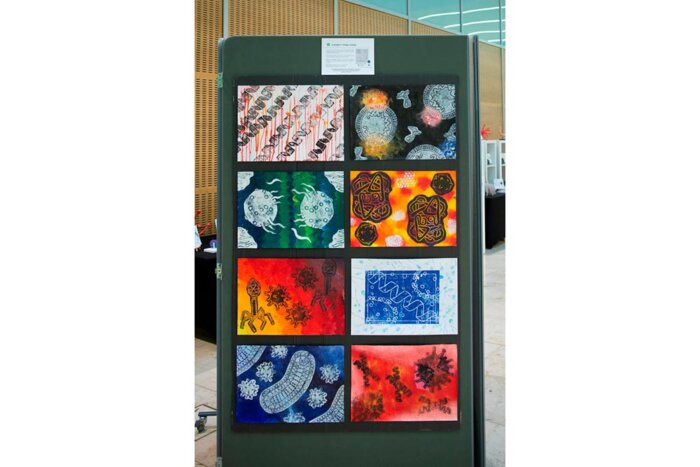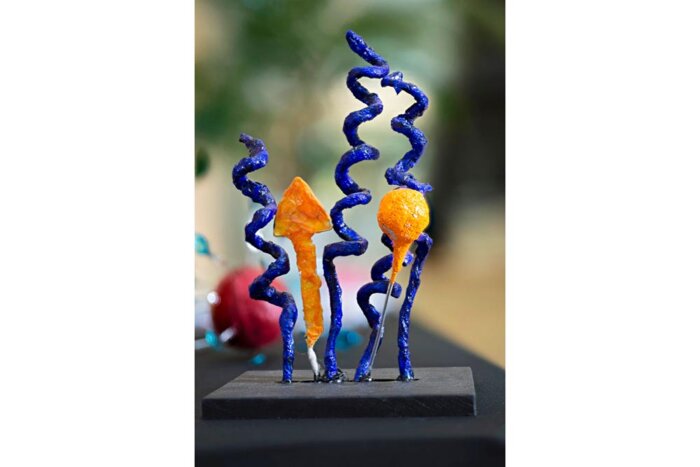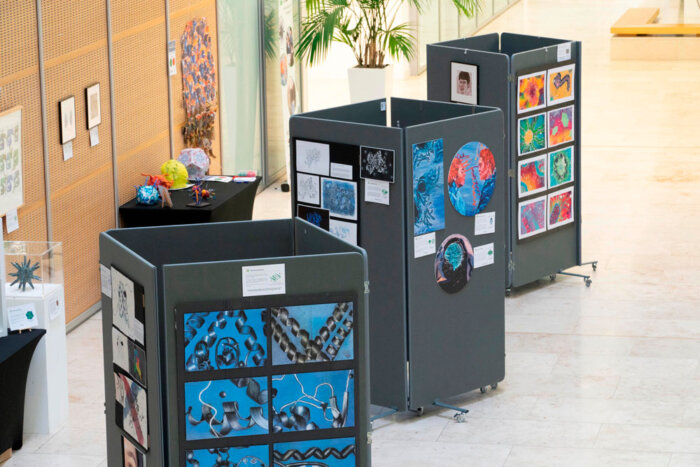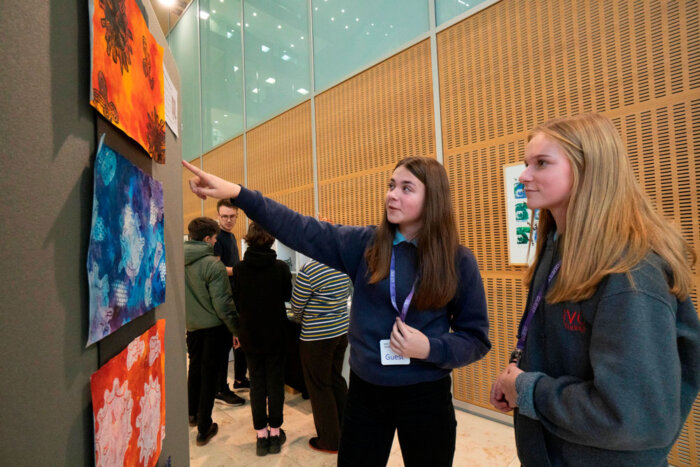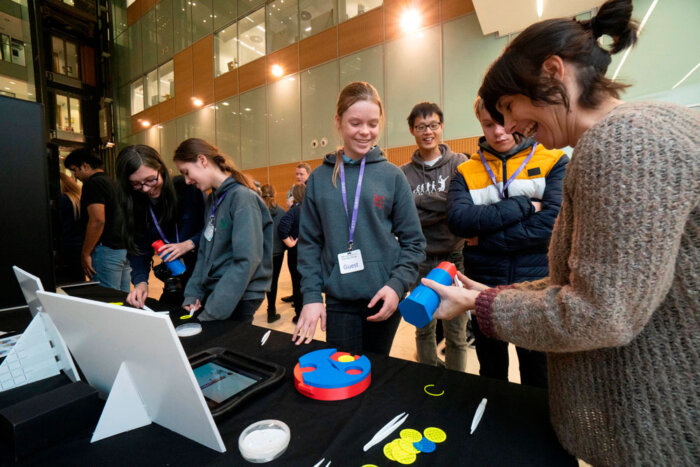The LMB hosted an exhibition of artworks inspired by the molecules of life and invited students from local schools to explore it
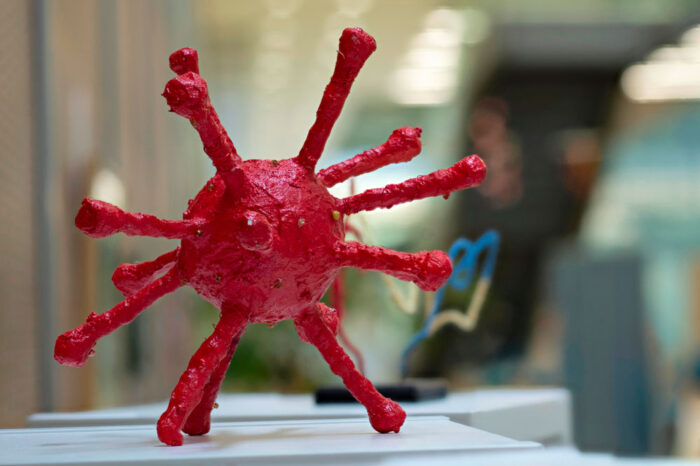
The LMB recently hosted an exhibition of artworks produced as part of the PDB Art project. Now in its fourth year, this project involves the Protein Data Bank in Europe (PDBe) working with local school art departments to help students create works of art inspired by molecular structures contained in the PDB. The project aims to help break down perceived barriers between art and science and show how the artistic mind can be used to help tell a story about the importance of structural biology.
On display in the LMB atrium were a range of styles of artworks, including paintings, prints, sculptures, and ceramics, inspired by molecular biology. These were selected from over 200 pieces of art created by the 135 students from five different schools who took part in the 2018/19 PDB Art project. Feedback from members of staff included: “Lovely work by all, creating a beautiful display in our atrium”, “Very visually stunning, but also really interesting ideas behind some of the pieces!”, and “Very impressed with all the exhibits – inspired to solve more structures”.
Several of the artworks were inspired by important protein structures solved by LMB scientists, including haemoglobin, the ribosome, zinc fingers, and tau filaments from a patient with Alzheimer’s disease. One piece was inspired by an AMPA receptor structure solved by Ingo Greger’s group in the LMB’s Neurobiology Division. Ingo commented, “It was really interesting to see how an artistic mind could see our work in such a very different way.”
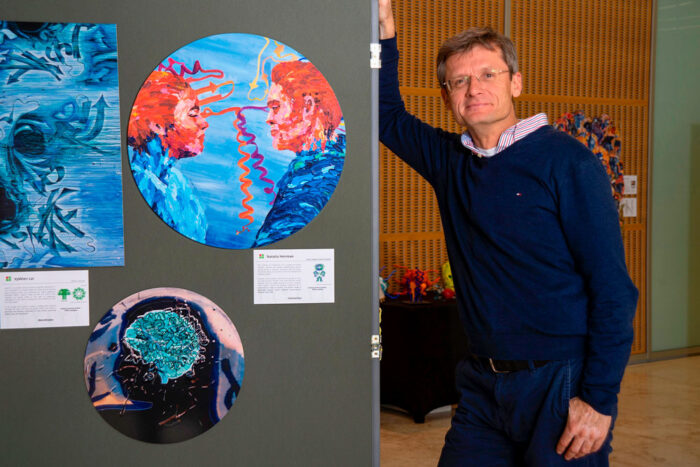
For one afternoon during the exhibition at the LMB, students were invited from four local schools who are taking part in the current PDB Art project. As well as exploring the exhibition looking for artistic inspiration, the students also met LMB scientists who study the proteins depicted in some of the artworks, allowing them to find out more about why researchers study those particular proteins.
Alongside the exhibition, the school groups were taken on lab tours so they could see where the science behind the art is carried out and learned how structures are solved by electron cryo-microscopy (cryo-EM) with Lori Passmore’s group’s hands-on activity “Cellular Machines in 3D”. Highlights of the hands-on activity and tour included preparing a sample for cryo-EM on a model of the grid-clipping kit and then seeing how much smaller the real thing is, and seeing the crystallisation liquid-handling robots setting up experiments.
Students commented, “Brilliant! Really inspiring, professional and creative. Thank you!”, “I think it is brilliant”, and “The artwork is very impressive, and the models were very well explained. I really enjoyed the interactive activities too.”
The PDB Art project is the result of a collaboration between PDBe, The Arts Society CANTAB, and The Arts Society Granta.
